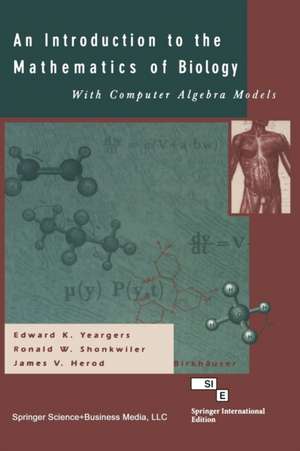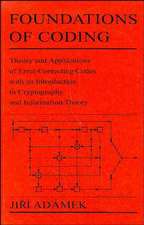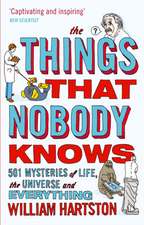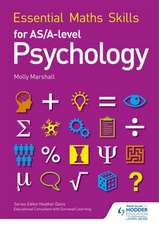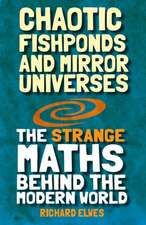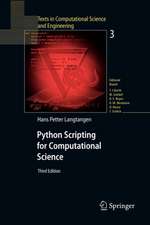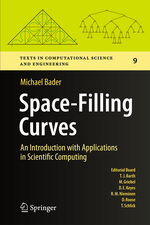An Introduction to the Mathematics of Biology: with Computer Algebra Models
Autor Edward K. Yeargers, James V. Herod, Ronald W. Shonkweileren Limba Engleză Paperback – 15 sep 2012
Preț: 394.51 lei
Nou
Puncte Express: 592
Preț estimativ în valută:
75.50€ • 78.22$ • 63.01£
75.50€ • 78.22$ • 63.01£
Carte tipărită la comandă
Livrare economică 22 martie-05 aprilie
Preluare comenzi: 021 569.72.76
Specificații
ISBN-13: 9781475710977
ISBN-10: 1475710976
Pagini: 428
Ilustrații: X, 417 p. 40 illus.
Greutate: 0.57 kg
Ediția:Softcover reprint of the original 1st ed. 1996
Editura: Birkhäuser Boston
Colecția Birkhäuser
Locul publicării:Boston, MA, United States
ISBN-10: 1475710976
Pagini: 428
Ilustrații: X, 417 p. 40 illus.
Greutate: 0.57 kg
Ediția:Softcover reprint of the original 1st ed. 1996
Editura: Birkhäuser Boston
Colecția Birkhäuser
Locul publicării:Boston, MA, United States
Public țintă
ResearchCuprins
1 Biology, Mathematics, and a Mathematical Biology Laboratory.- 1.1 The Natural Linkage Between Mathematics and Biology.- 1.2 The Use of Models in Biology.- 1.3 What Can Be Derived from a Model and How Is It Analyzed?.- References and Suggested Further Reading.- 2 Some Mathematical Tools.- 2.1 Linear Dependence.- 2.2 Linear Regression, the Method of Least Squares.- 2.3 Multiple Regression.- 2.4 Modelig with qint Differential Equations.- 2.5 Matrix Analysis.- 2.6 Statistical Data.- 2.7 Probability.- References and Suggested Further Reading.- 3 Reproduction and the Drive for Survival.- 3.1 The Darwinian Model of Evolution.- 3.2 Cells.- 3.3 Replication of Living Systems.- 3.4 Population Growth and Its Limitations.- 3.5 The Exponential Model for Growth and Decay.- 3.6 Ouestions for Thou2ht and Discussion.- References and Suggested Further Reading.- 4 Interactions Between Organisms and Their Environment.- 4.1 How Population Growth is Controlled.- 4.2 Community Ecology.- 4.3 Environmentally Limited Population Growth.- 4.4 A Brief Look at Multiple Species Systems.- 4.5 Questions for Thought and Discussion.- References and Suggested Further Reading.- 5 Age-Dependent Population Structures.- 5.1 Aging and Death.- 5.2 The Age-Structure of Populations.- 5.3 Predicting the Age-Structure of a Population.- 5.4 Questions for Thought and Discussion.- References and Suggested Further Reading.- 6 Random Movements in Space and Time.- 6.1 BioloQical Membranes.- 6.2 The Mathematics of Diffusion.- 6.3 Interplacenlal Transfer of Oxygen: Biological and Biochemical Considerations.- 6.4 Oxygen Diffusion Across the Placenta: Physical Considerations.- 6.5 The Spread of Infectious Diseases.- 6.6 Questions for Thought and Discussion.- References and Suggested Further Reading.- 7 The Biological Disposition of Drugs and Inorganic Toxins.- 7.1 The Biological Importance of Lead.- 7.2 Early Embryogenesis and Organ Formation.- 7.3 Gas Exchange.- 7.4 The Digestive System.- 7.5 The Skin.- 7.6 The Circulatory System.- 7.7 Bones.- 7.8 The Kidneys.- 7.9 Clinical Effects of Lead.- 7.10 A Mathematical Model for Lead in Mammals.- 7.11 Pharmacokinetics.- 7.12 Questions for Thought and Discussion.- References and Suggested Further Reading.- 8 Neurophysiology.- 8.1 Communication Between Parts of an Organism.- 8.2 The Neuron.- 8.3 The Action Potential.- 8.4 Synapses—Interneuronal Connections.- 8.5 A Model for the Conduction of Action Potentials.- 8.6 The Fitzhugh-Nagumo Two-Variable Action Potential System.- 8.7 Questions for Thought and Discussion.- References and Suggested Further Reading.- 9 The Biochemistry of Cells.- 9.1 Atoms and Bonds in Biochemistry.- 9.2 Biopolymers.- 9.3 Molecular Information Transfer.- 9.4 Enzymes and Their Function.- 9.5 Rates of Chemical Reactions.- 9.6 Enzyme Kinetics.- 9.7 Questions for Thought and Discussion.- References and Suggested Further Reading.- 10 A Biomathematical Approach to HIV and AIDS.- 10.1 Viruses.- 10.2 The Immune System.- 10.3 HIV and AIDS.- 10.4 An HIV Infection Model.- 10.5 A Model for a Mutating Virus.- 10.6 Predicting the Onset of AIDS.- 10.7 Questions for Thought and Discussion.- References and Suggested Further Reading.- 11 Genetics.- 11.1 Asexual Cell Reproduction—Mitosis.- 11.2 Sexual Reproduction—Meiosis and Fertilization.- 11.3 Classical Genetics.- 11.4 A Final Look at Darwinian Evolution.- 11.5 The Hardy-Weinberg Principle.- 11.6 The Fixation of a Beneficial Mutation.- 11.7 Questions for Thought and Discussion.- References and Suggested Further Reading.
Recenzii
"A very well balanced combination of biology and mathematics. Mathematics students have an opportunity to learn enough biology to make good models, and biology students will see it as an opportunity to understand the dynamics of a biological system. It can serve as the source of many good models with possible applications in different areas of biological research." —Gen. Physiol. Biophysics
"The title is a good description of this introductory textbook, which integrates quite nicely biology and mathematics… Each chapter ends with questions for discussion and references pointing to further reading… Intended for biology students with one year of calculus who want an introduction to mathematical modeling and for mathematics students with little knowledge of biology who want to become familiar with biological applications. The book succeeds at both intents. It is an excellent appetizer." —Zentralblatt MATH
"The title is a good description of this introductory textbook, which integrates quite nicely biology and mathematics… Each chapter ends with questions for discussion and references pointing to further reading… Intended for biology students with one year of calculus who want an introduction to mathematical modeling and for mathematics students with little knowledge of biology who want to become familiar with biological applications. The book succeeds at both intents. It is an excellent appetizer." —Zentralblatt MATH
Caracteristici
Includes supplementary material: sn.pub/extras
